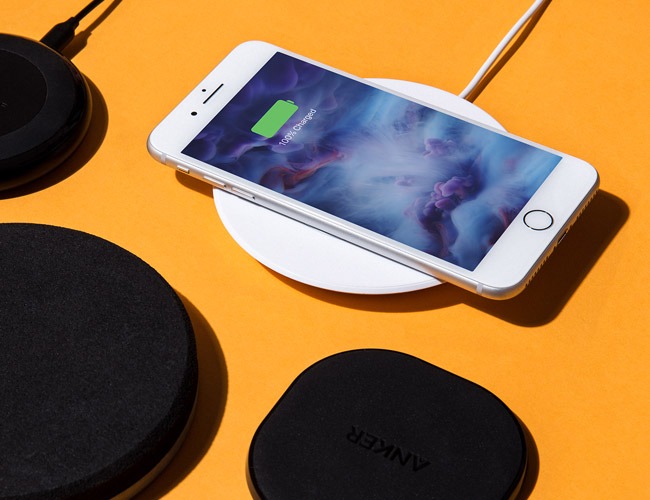If you’ve owned an iPhone for the last couple years and have finally make the jump to one of the new models — either the iPhone 8, iPhone 8 Plus or iPhone X — this is probably the first time you’re considering buying a Qi-wireless charger. If you’re an Android owner, you’ve been able to do this for years, but there have been some important advancements in wireless charging in the last year. The most significant advancement, as it relates to your new iPhone or Android, is fast charging technology.
Qi-wireless fast chargers are a little bit different for iPhone and Android. In order to fast charge the new iPhones the charger needs to output 7.5 watts of power, while the new Androids can handle up to nine watts of power. It all can get a little complicated, but the important thing to know is that in order for the Qi-wireless charger to fast charge, it needs to pull from a more powerful source. For example, the standard iPhone USB wall adapter has a max output of five watts — no matter which Qi-wireless you plug into that wall adapter, none of them are going to be able to fast charge your new iPhone.
Most high-speed wireless chargers need a compatible wall charger to work. And some of these Qi-wireless fast chargers won’t charge your iPhone or Android at all if the power source is too weak — like your laptop or desktop computer. These older USB Type-A ports have notoriously weak outputs. For example, you can plug Anker’s new PowerWave 7.5 Pad ($46) directly into my 2015 iMac and it won’t charge my iPhone 8 Plus at all, let alone fast charge it.
It’s a common assumption that all Qi-wireless chargers that hook up via USB will work all USB ports, but that’s just not the case, especially with fast charging technology. So before you buy a Qi-wireless make sure you’re planning on using the wall adapter that it comes with, or if not make sure your current laptop or desktop supports it. The last thing you want is to plug in into your computer, realize it doesn’t work and have to reconfigure your setup trying to find an open wall outlet.
Everything you need to know before buying a wireless charger. Read the Story



